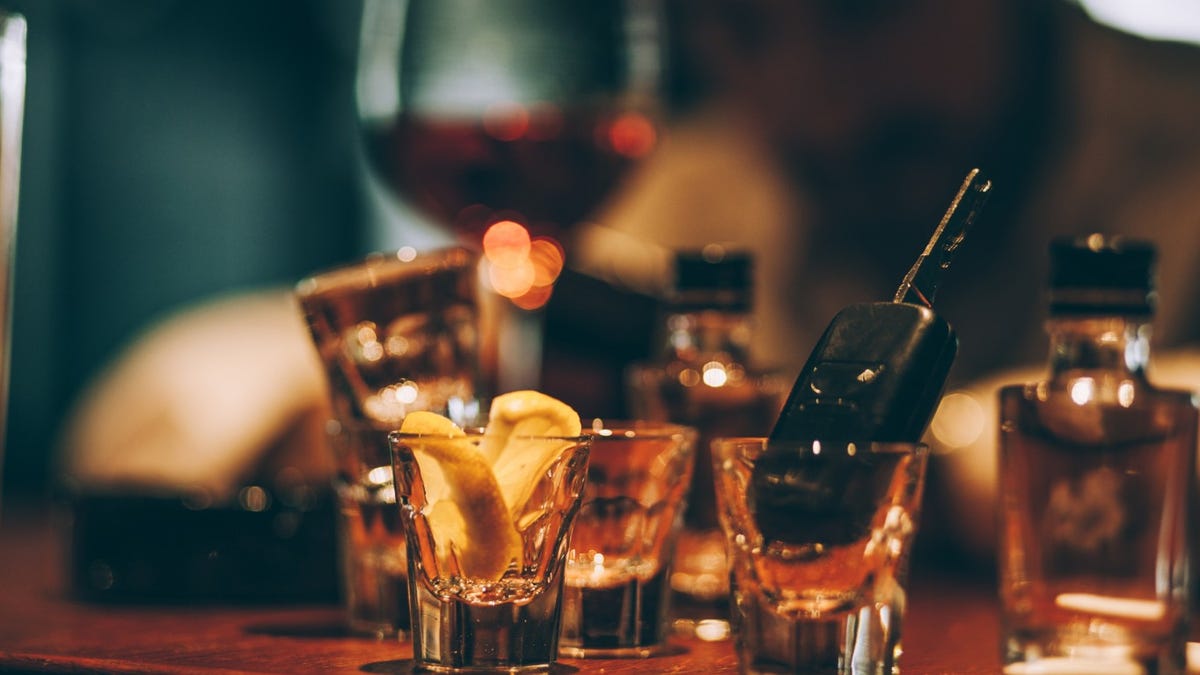This is how ‘Dry January’ affects your gut health
If you’ve decided to take on Dry January, you will probably start to see positive changes in your health like better sleep, clear complexion and improved mood.
Buzz60
The first day of Dry January is nearing for heaps of Americans who will choose to cut alcohol out of their diets during the first full month of 2024. The popular health trend challenges participants to forego alcohol for 31 days in a row.
Americans across the nation have been tacking on the alcohol abstinence challenge to their New Year’s resolutions for years and sharing their experiences with the challenge on social media. And doctors have tips for completing the challenge without faltering.
Here’s what’s new for Dry January 2024 and what’s tried and true from past years:
What is Dry January? What are the health benefits?
Dry January began as a campaign created and led by Alcohol Change UK more than a decade ago. The British charity and advocacy group aims to reduce the harms of alcohol, according to their website.
Thousands of sober-curious drinkers across the U.S. tackle the challenge each year. Between 15% and 35% of U.S. drinkers overall participate in Dry January, according to past surveys published by Morning Consult Pro.
With more non-alcoholic options: It’s easy to observe. Here’s how.
A study by French researchers published in 2022 in the Harm Reduction Journal found that the short one-month break from alcohol in challenges like Dry January and Sober October can improve aspects of a drinker’s health.
“Both successful and unsuccessful participants frequently reported health benefits, including sleep improvement and weight loss. Successful participants were more likely to durably change their alcohol drinking habits,” they wrote in the article, “One-month alcohol abstinence national campaigns: a scoping review of the harm reduction benefits.”
The health benefits can include weight loss, lower liver fat and blood sugar and improved mood and energy levels, according to the University of California Davis Health.
What are some ways Americans can complete Dry January?
Medical professionals suggest sober-curious people prepare ahead of time to be the most successful. Dr. Dawn Sugarman, a research psychologist at McLean Hospital in Massachusetts and an assistant professor at Harvard Medical School, recommends Dry January participants make a plan for social situations where they might typically order an alcoholic drink.
“You don’t want to be caught off guard. Think about what you’re going to do. Are you going to get a nonalcoholic drink and hold that so that you’re holding a drink and that makes you feel better?” Sugarman previously told USA TODAY.
Other tips from The National Institute on Alcohol Abuse Abuse and Alcoholism include:
◾ Assessing your relationship with alcohol, including “identifying why you choose to drink alcohol.”
◾ Telling friends and family that you’re participating in Dry January and encouraging them to participate with you.
◾ Choosing or bringing your own nonalcoholic beverages to social events.
Dr. Rocco Iannucci, a director of the Fernside Residential Treatment Program at Harvard-affiliated McLean Hospital, told Harvard Health Publishing he recommends participants who complete the challenge stop and reflect before picking up a cocktail or a beer in February.
Those reflections can include asking yourself if you feel like quitting alcohol for good, how it felt physically and mentally to live alcohol-free and whether you swapped drinking for another habit like overeating.
“You may decide to continue Dry January for another month and then evaluate again,” Iannucci said.
Are you trying Dry January? Here’s how to keep healthy habits going all year
Nonalcoholic drinks for Dry January
Restaurant and bar owners from San Diego on the West Coast to Mississippi on the East Coast are adjusting their offerings as demand spikes for mocktails, nonalcoholic versions of popular alcoholic drinks, and nonalcoholic beers and wines.
Those drinks aren’t new, but they’re increasing in popularity.
Sales of nonalcoholic beer, for example, were up 35% in October 2023, according to Connecticut-based Bump Williams Consulting. The company services the alcoholic beverage industry and uses Nielsen data. And sales of nonalcoholic beer, wine and spirits combined increased 32% over the 52-week period ending Oct. 7, according to data firm NIQ’s tracking of sales in U.S. supermarkets, drug stores and mass-merchandise stores.
Contributing: Mike Snider, Marina Pitofsky; USA TODAY; Diana Leyva, Nashville Tennessean
Contact Kayla Jimenez at [email protected]. Follow her on X, formerly Twitter, at @kaylajjimenez.

Barbara Terrio is a seasoned business journalist, delving into the world of finance, startups, and entrepreneurship. With a knack for demystifying complex economic trends, she helps readers navigate the business landscape. Outside of her reporting, Barbara is an advocate for financial literacy and enjoys mentoring aspiring entrepreneurs.






